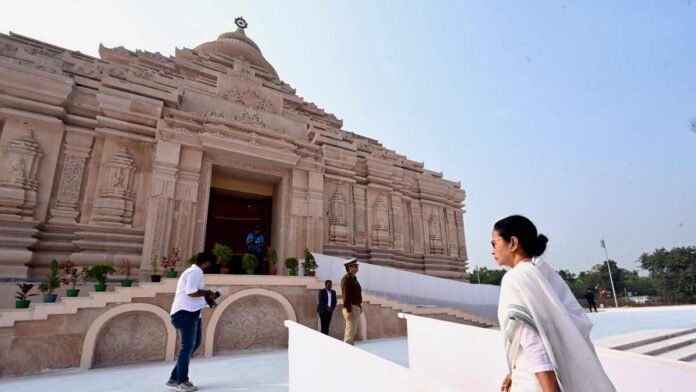
West Bengal is gearing up for the grand inauguration of the Jagannath Temple in Digha, scheduled for April 30, 2025. This long-awaited spiritual project is set to be inaugurated by Chief Minister Mamata Banerjee, who has closely monitored and supported the temple’s development from its inception. The event is expected to be one of the most significant religious and cultural milestones in the state in recent years.
A Vision Rooted in Tradition
The temple, located in the popular coastal town of Digha in East Midnapore district, has been built on a sprawling 22-acre site. It draws its architectural inspiration from the iconic Jagannath Temple in Puri, Odisha. With intricate carvings, massive sandstone pillars, and an imposing main sanctum, the temple is a visual and spiritual delight. It houses the idols of Lord Jagannath, his siblings Balabhadra and Subhadra, and the goddess Maa Vimala.
One of the most notable features of the Digha temple is the inclusion of an idol near the entrance, which allows devotees to offer prayers from outside—echoing the unique tradition followed in the Puri temple. This small but symbolic detail ensures that spiritual accessibility is maintained even for those who may not be able to enter the main sanctum during busy festivals or rituals.
Extensive Preparations for the Inauguration
With the inauguration drawing closer, elaborate arrangements are being made to accommodate the estimated crowd of 12,000 to 14,000 attendees. The district administration, police, and temple authorities are working in tandem to ensure that the event is conducted smoothly and safely.
Security has been tightened across the temple vicinity. CCTV cameras have been installed along all approach routes, and watchtowers have been set up for constant surveillance. The area around the temple will be declared a high-security zone, with drone monitoring expected during the event.
In terms of emergency readiness, fire tenders and ambulances will be stationed at key points, and additional medical teams will be deployed to manage health concerns that may arise due to the large gathering.
To avoid traffic congestion, vehicular movement within a 3-4 km radius of the temple will be restricted on April 29 and 30. Visitors have been advised to arrive in Digha by the afternoon of April 28 to avoid last-minute rush and logistical issues. Special parking zones and shuttle services are also being arranged.
Symbolic and Cultural Significance
The timing of the inauguration holds immense religious significance as it coincides with Akshaya Tritiya—an auspicious day in Hindu tradition associated with prosperity and new beginnings. The state government has ensured that traditional rituals will be followed in their entirety, blending religious observance with ceremonial grandeur.
Chief Minister Mamata Banerjee’s involvement has gone beyond administrative support. She personally donated ₹5 lakh for the creation of the golden broom, which will be used in the ceremonial cleaning of the temple area—a ritual reminiscent of the chariot cleaning tradition in Puri during the famous Rath Yatra.
A 27-member trustee board has also been formed to oversee the temple’s operations post-inauguration. This board includes spiritual leaders, government representatives, and cultural experts to ensure that the temple remains not just a religious hub, but a well-managed institution.
A New Cultural Landmark for Bengal
Once inaugurated, the Jagannath Temple in Digha is expected to draw thousands of pilgrims and tourists every month. Its presence is likely to further elevate Digha’s status not just as a seaside resort town but as a significant spiritual destination in eastern India. The economic impact is also expected to be considerable, with local businesses and hospitality services anticipating a rise in demand.
Beyond its architectural beauty and religious importance, the temple stands as a symbol of West Bengal’s commitment to preserving its cultural identity while embracing large-scale infrastructure development. As the state prepares to open the temple doors to the public, it does so with the hope that this spiritual space will inspire devotion, unity, and regional pride for generations to come.
